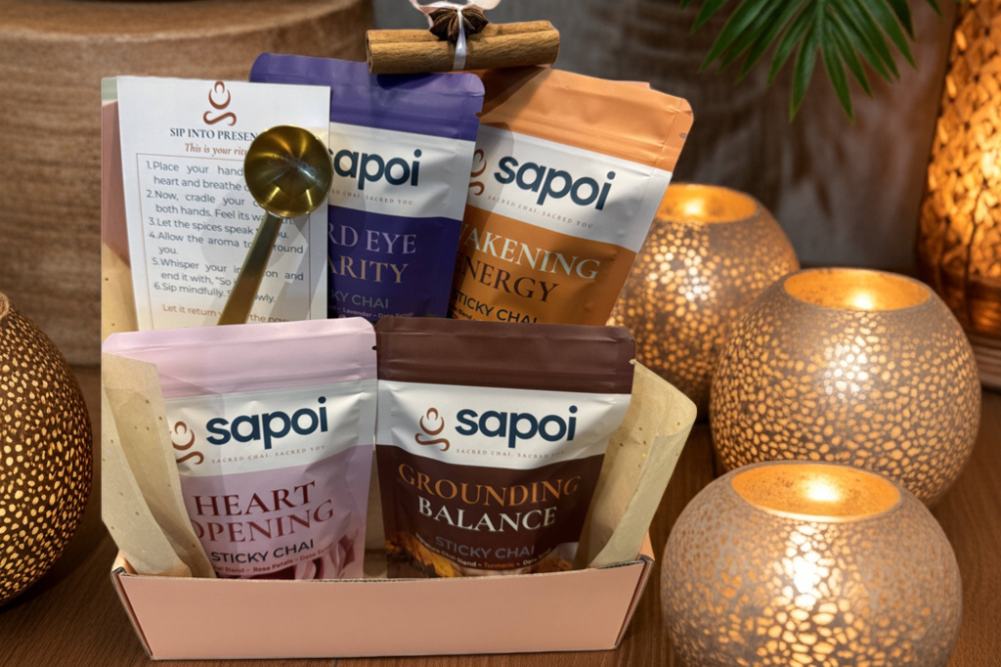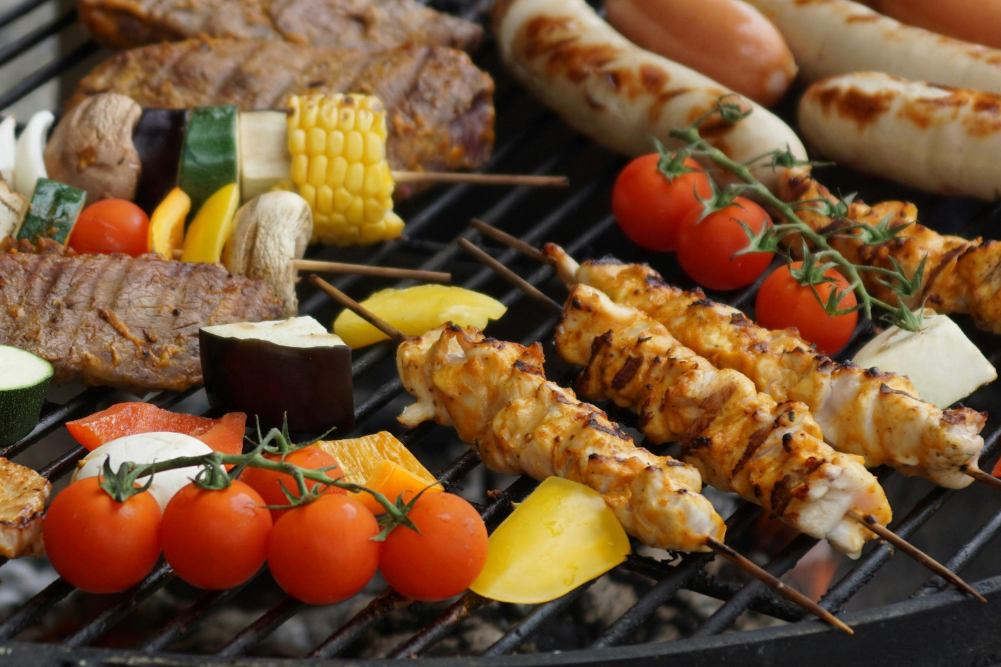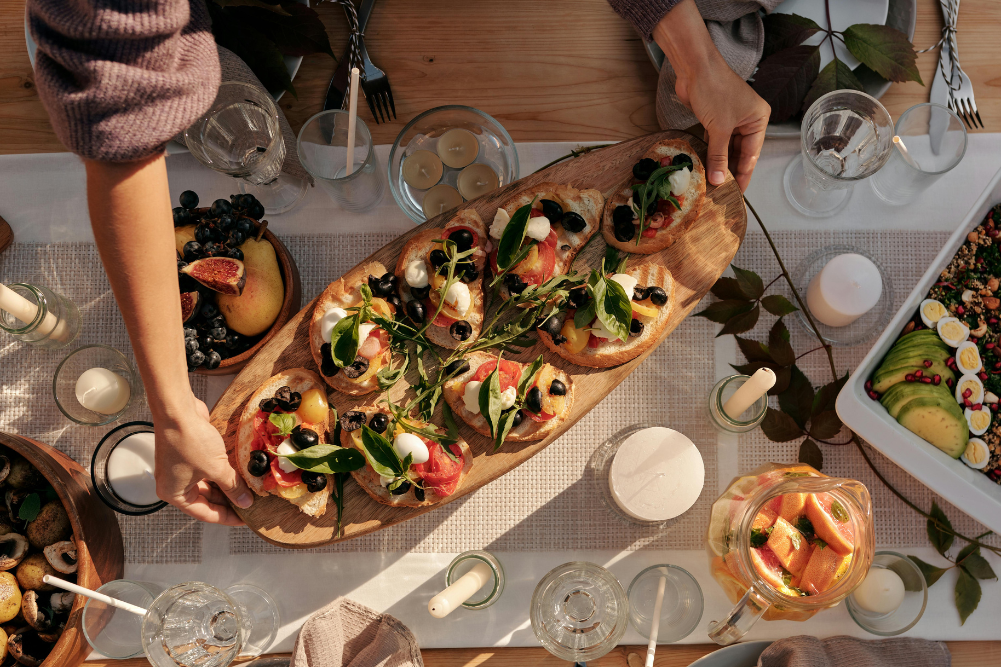How to readjust your relationship with food
The “sacred” is usually the domain of religious or spiritual practice and belief, but it also can relate to that which is worthy of respect and due reverence. The custom of eating food in a manner that denotes it is sacred has been practised by many cultures throughout history yet is losing relevance in our fast-food marketing-driven world. Or is it?
Food has the power to create glowing health in your body but also devastating illness. It can bring nations and families together and be the conduit that brings two lovers closer. Over the past 200 years of dissecting and studying food scientifically, we have just begun to scrape the surface of understanding all the complexities of food and it’s multifaceted interactions with our bodies, not to mention our relationship with how we eat and the social context in which we eat.
Nutritional science has not fully grasped that food is far more to humans than a sum of fascinating macro and micronutrients. In some cultures, the act of receiving nourishment was part of receiving divine love. In less materialistic and more spiritual societies this has been appreciated. Traditionally, the Koreans believed that for food to truly be good it was not just important that it be prepared hygienically clean, tasty and nutritionally sound but it must be prepared in a sincere and well-intentioned way by the cook.
Finding the meaning in eating
While eating is about nourishing the body, giving it energy to run and protecting it from disease, it can also be a time that brings people together.
Families who share a regular meal together are known to have greater cohesion. The sharing of the meal can take on powerful symbolism and meaning as well as create a pleasurable powerful way to bond.
It takes very little whole food to nourish the body. In countries like ours, where food is abundant and easily accessed, we eat for reasons beyond satisfying hunger or gaining nourishment.
Sacred aspects of eating involve not eating, too. Most religions and significant spiritual leaders advocate and model the practice of abstaining from either certain foods or all food for periods of time, not as an act of suffering but as a ritual designed to bring clarity mentally, spiritually and physically.
These periods of rest, or fasting, not only build mental strength to resist food, but they provide the opportunity to understand psychological dependence on food and give your body a break. Many people testify to remarkable clarity of thinking when the body is not weighed down by the hugely taxing exercise of digestion.
Sacred practices in some religions and cultures forbid or restrict the consumption of certain foods or food combinations. Hindus, for example, believe cows are sacred beings; in Judaism, eating pork is forbidden and the combining of meat and dairy as well as the consumption of seafood are subject to dietary laws connected to worship and religious belief. Some Christians aren’t allowed to eat meat on certain days of the year, others not at all.
I strongly encourage people to observe and listen to their own bodies for subtle signs of intolerance to know what it is their body is asking them to restrict. To do this, we need to slow down and be mindful when eating.
Slowing down
There is no mystery around modern food being designed to be eaten fast, in cars or in front of televisions and without a great deal of time or thought. If you eat a “drive-through meal” at a table, in silence, without distraction, chewing each mouthful of food until it liquefies, and then take the time to observe how it makes you feel, fast food becomes a painful and empty experience. A friend was recounting how he took his five-year-old son out recently to share in a father-son bonding ritual of exposing him to his first fast-food burger and, while Dad was scoffing down his burger, his son looked and smelled the burger and said, “Daddy, this can’t be good for me” and chose not to eat it.
Conversely, eating a single piece of organically grown tree-ripened fruit, slowly, consciously and without distraction can be as satisfying as a degustation meal. Fast food relies on addictive properties and our prevailing culture of not enough time to spend preparing and appreciating what we put into our bodies.
Becoming connected to food is a process of slowing down and being present to what is entering your body. In a recent meditation class with Kate James, she had us eat mindfully a piece of dark chocolate, first looking at it with awareness, feeling it soften in our fingers, smelling the intense compelling aromas and then finally tasting all the flavours while slowly allowing the warmth of our tongues to melt the chocolate and dissolve it. I had done this exercise 17 years ago when I started my cooking school, but the intensity of the experience now that I have a regular practice of meditation and mindfulness was quite powerful. A piece that would have once satisfied me was now too much to finish.
Enough
Gluttony is a concept that is frowned on in religions. Many spiritual teachers, such as the Buddha, have advocated moderation in most things and having few possessions in life, including embracing simplicity when it comes to food. In a world that worships the idea of more, the thought of less being more may be the best antidote to obesity.
Lynn Twist, author of The Soul of Money, eloquently discusses the concept of enough in a world that is all about more. She gives an elegant explanation of how enough is part of the abundant mindset, encouraging readers to consider eating to three-quarters full. The food and nutrition industry has continued to encourage people to eat more; if you compare the current daily dietary recommendations to those of the 1950s you will find the quantities have increased substantially. It takes little nutrient-dense food to provide what the body needs, but the compulsion for increased profits is insatiable and influences nutritional marketing to consumers.
Be grateful
There has been a long tradition in many cultures of giving thanks for the food before us, from social dictates to deeply spiritual impulses: a blessing of those whose work brought the food to the table; an acknowledgement of the sacrifice by workers growing the food, cooks preparing the meal or an animal that has had its life taken. The blessing of food is a way of expressing appreciation for what has come to the table.
When you make something yourself you have much more appreciation and respect for it than when you buy something ready made. If I have a little nut milk left over that has soured, as I consider throwing it out I remember all the work that went into buying the nuts, soaking the nuts and the dates, chopping the vanilla bean to soak, blending it all in my mixer and then squeezing out the milk through my nutmilk bag; this is very different from throwing out almond milk made in a factory overseas, that I have simply bought with money and opened. Today, little thought is given as we eat in a hurried way, in our cars, at the sink or the bench. In Australia and New Zealand, one in three meals are eaten outside the home and rarely are the meals at home made completely from scratch, so it is difficult to get a sense of appreciation for all that goes into what we eat.
Be conscious of what you are taking into your body, of the resources required from the planet to bring it to you, of the human resources used to bring it to you in the form of transport, processing, storage and packaging. This will likely give you an idea of the resources that will be required by the body to break it down and assimilate the nutrients and eliminate the waste most effectively. The more complex a food is in its “manufacture”, the more confusion your body has in dealing with it. In fact, your body can actually store chemicals and foreign elements in the confusion.
The kitchen table
The table or space where you eat is part of the sacred meal. In the past, eating was done in a circular formation; even at a square or rectangular table, people would hold hands to create a circle when giving thanks.
Eating in front of a television or computer screen distracts us from conscious eating and separates us from the power that comes from the ritual of connection to those in our lives who can hear us, love us, challenge us and shape us, giving us a sense of profound connection.
The social context in which we share the meal can be as powerful as the food itself. The sharing of food with another person with pure intent, with loving intent, with gratitude, heightens the experience and less food is required to nourish the body as the soul is being fed, too. Much of the world’s obesity crisis is about people feeding their starving souls with empty food that can never satiate the body and that mirrors the emptiness inside, so they keep feeding and feeding themselves only to become obese and, ironically, starving for real nourishment.
I’d rather have a bowl of noodles with people who are loving, kind and happy than have the most gourmet, nutritionally sound meal with people who are angry, negative and judgemental. Imagine the power, though, of having really great food with loving people. The beauty of sharing food with people you love and respect, who love and respect you, is beautifully summarised in the French proverb: “Where love sets the table, food tastes its best.”
Origins of food
Understanding where your food comes from, who has brought it to you and their intention is a huge step toward connecting with your eating experience. Consider for a moment the comparison between a farmer who works hard to maintain the idealistic standards of biodynamic farming versus a multinational cashing in on public demand by producing organic food versus a corporation abusing workers and animals to ultimately make the highest profit for shareholders. The origin of your food has an effect on your wellbeing.
Farmers’ markets are a great way to find out where your food comes from and reconnect to food. Even better is growing your own food using the most Earth-nurturing practices. This will yield not only higher nutrient levels but a deeper sense of connection to the Earth and the energy force it extracts from the sun and channels into plants, which pass it on to you. You, in turn, radiate at a higher energetic level to those around you. I have observed that people become not just healthier but more attractive energetically as they connect to the Earth.
I interviewed shoppers on a Saturday morning for a documentary I’ve been working on and asked them this question: “How do you feel about shopping on a Saturday morning at the farmers’ market?” I had a queue of people wanting to tell me how they loved it and loved the food and how it had not only enriched their lives but was one of the highlights of their week. when I asked a similar question at a nearby supermarket the same morning, most people scurried away.
I could only get one person to agree to be interviewed; she was someone I could see was resistant but had difficulty saying no. She confessed she normally shops at the farmers’ market but was in a hurry to prepare for her grandson’s party.
Go to the source
One of the greatest sacred acts of eating is to eat at the source, directly from the plant itself. If you have ever eaten a ripened piece of fruit warmed by the sun and plucked directly from a tree, you understand a connection to source energy that is diminished the further the plant is from picking. Growing your own food is a powerful way to connect to the source energy that comes directly from the sun into plants.
At a recent symposium of holistic farming and food security, much was made about the need for more food, when in truth the planet has the capacity to feed more people. We do not need to produce greater yields of food to feed everyone well. In fact, we need to produce less volume but more nutrient-dense food without processing out nutrients and using chemicals that poison the land that’s meant to nurture the plants we eat.
Most importantly, we need education for those who have busied themselves to acquire the things they increasingly value more than very essence of what nourishes us. In the past few years, I’ve heard many people complain about how expensive food is and that they can’t afford organic food, yet those same people wear high-end fashion and have the latest iPods and mobile phones with plans over $100 a month. What we want has taken precedence over what we truly need.
Kiss your food — keep it simple
There is merit in having respect for food that is grown well and eating it close to the source with a true respect for where it has been taken from, keeping as many nutrients alive by eating it raw (or close to) without chemicals or intense processing. Knowing where your food comes from, how hard its producers have worked and the intention with which they’ve laboured will make a difference. Eating a variety of food that comes from your local region with appreciation for the colours, textures and flavours will provide benefits to the body that can nourish, energise and protect it.
When you do this with people you care about, you’ll find that your digestion improves, your spirit is enriched and it requires less food and less strain on the environment to nourish you. And, importantly, the taste will bring you divine pleasure.
Sherry Strong is a food philosopher and nutritional strategist based in Melbourne and Vancouver. She is the curator & co-founder of the World Wellness Project and runs workshops and speaks globally on food and its connection to wellness. www.sherrystrong.com







